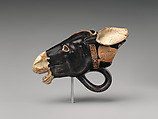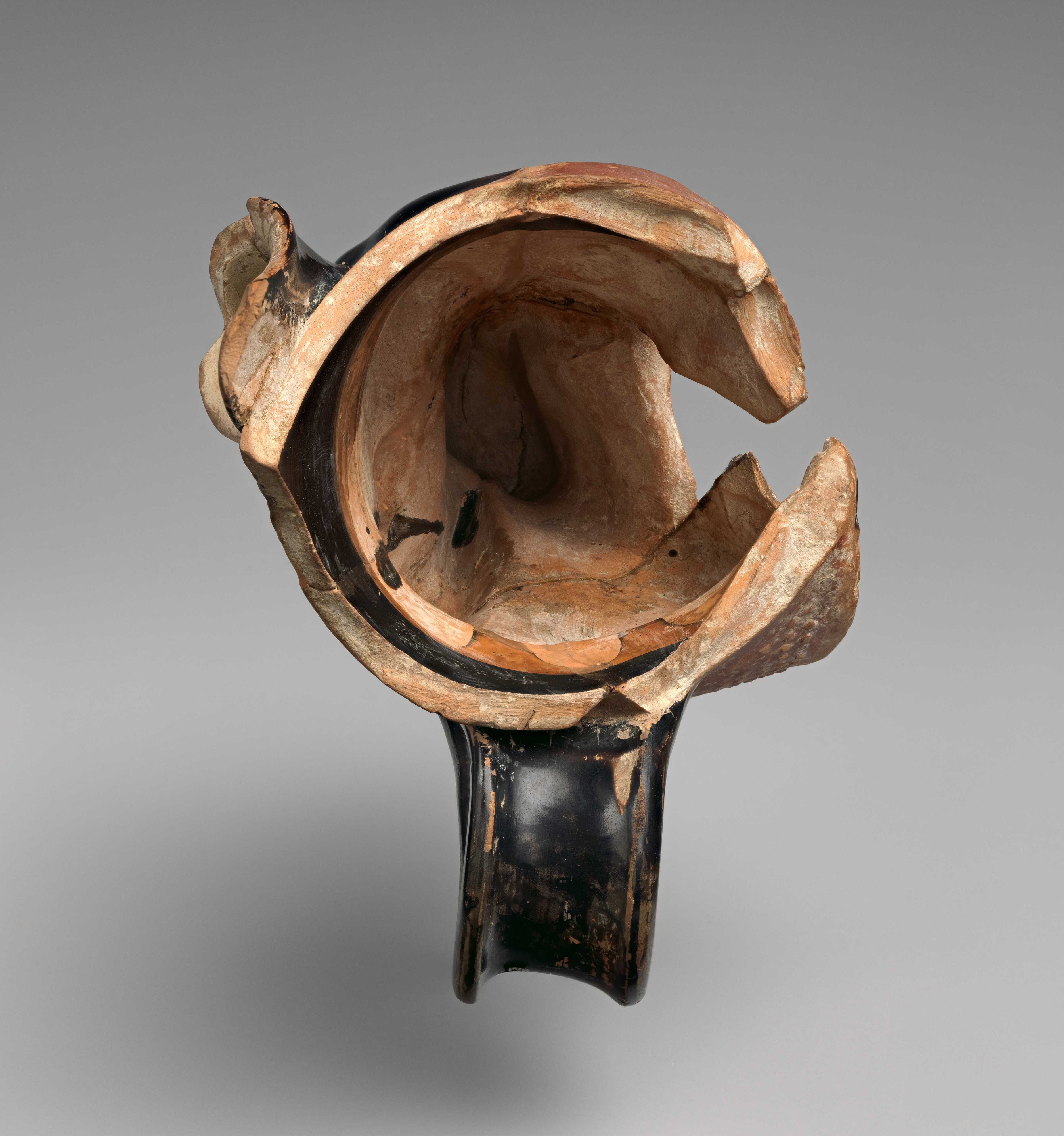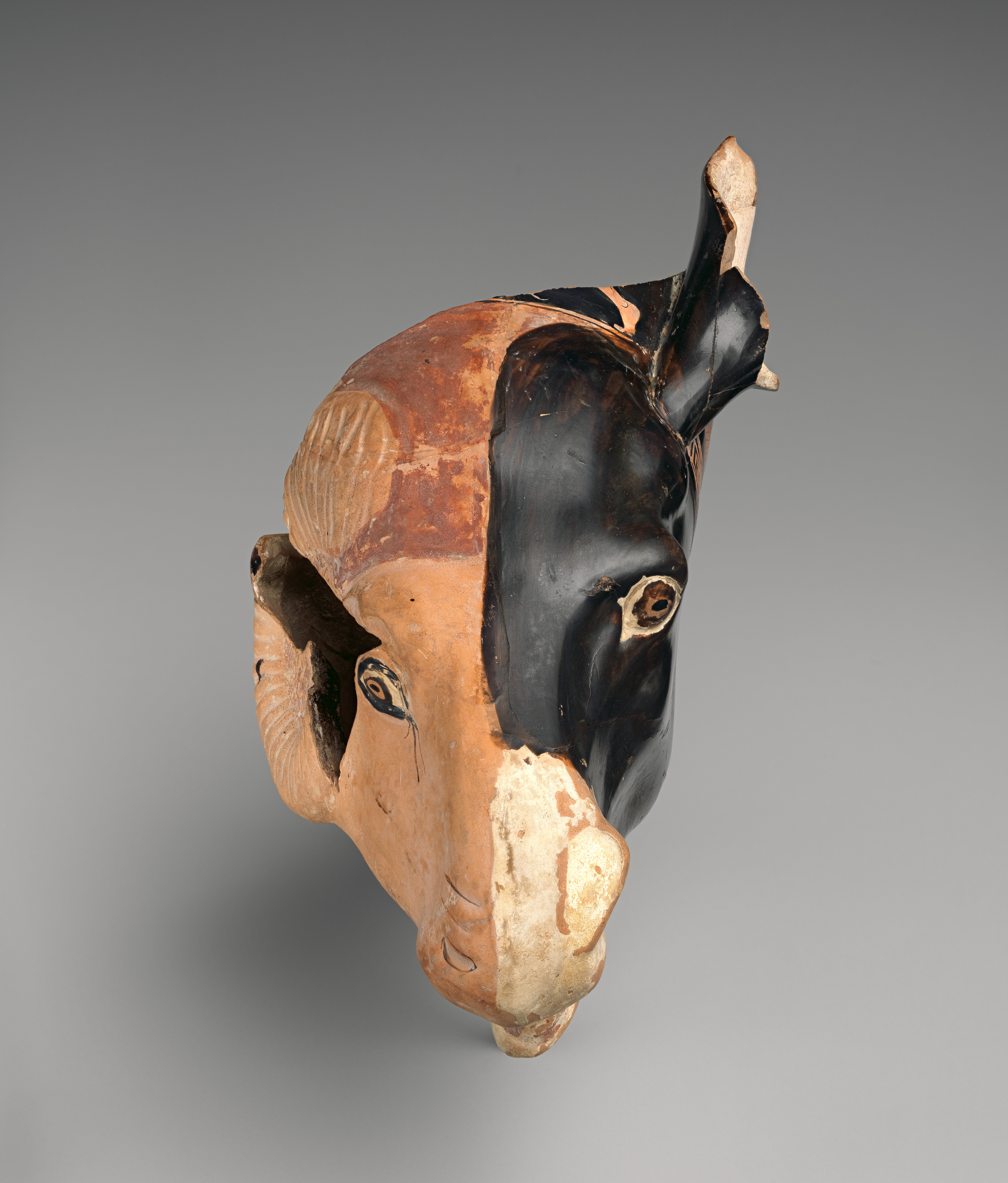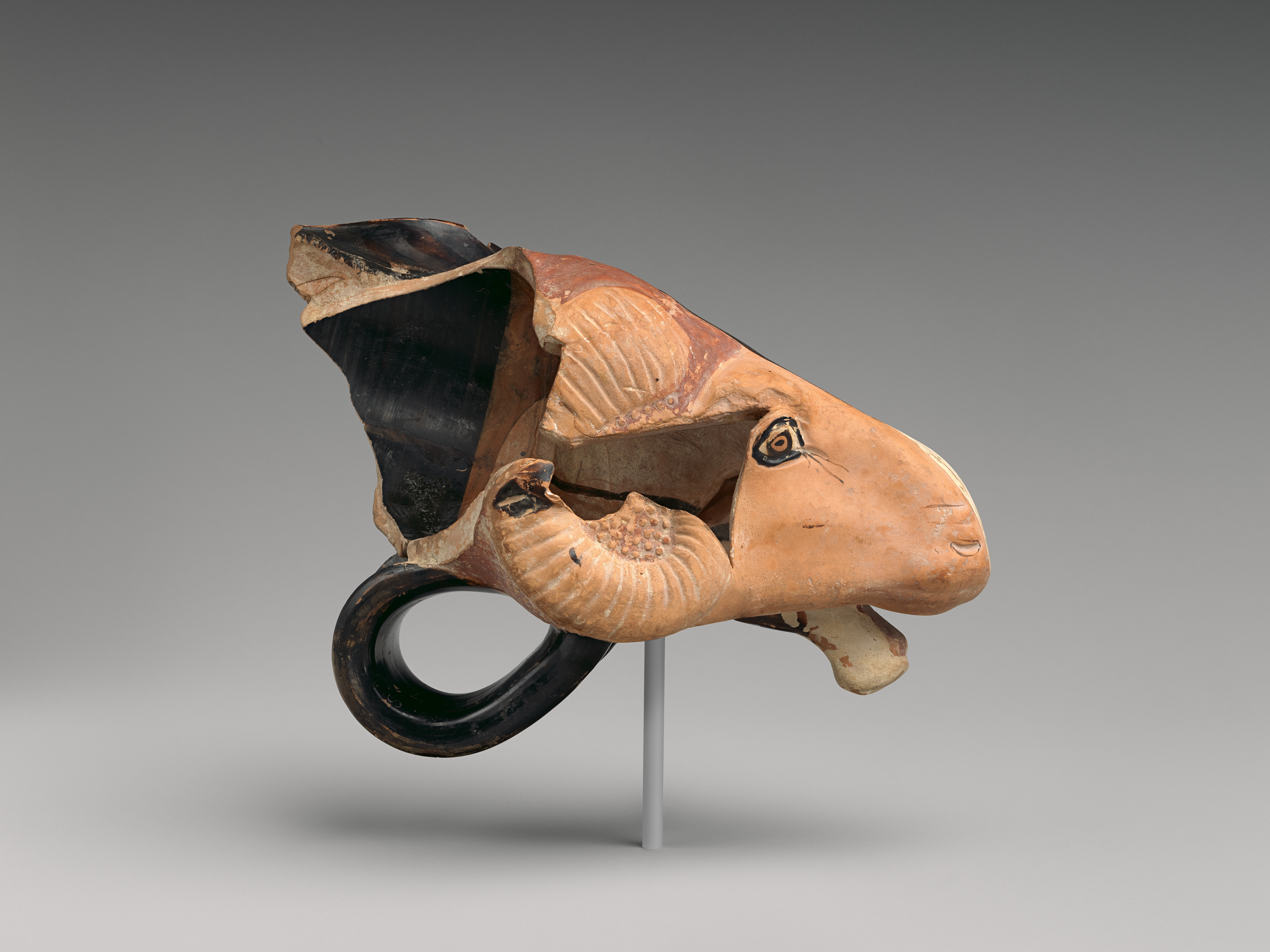Fragmentary terracotta rhyton (vase for libations or drinking)
Attributed to the manner of the Sotades Painter
Remains of two figures
The predilection for vases in figural form continued throughout the fifth century B.C. During the middle of the century, the workshop of the Sotades Painter was the most active and creative source. Whereas head vases, occasionally with two heads conjoined, were popular in the 490s and 480s, the next generation of artists introduced the conceit of combining the heads of different animals, in this case, a donkey and a ram. The painted scene probably showed a satyr and a maenad.
Due to rights restrictions, this image cannot be enlarged, viewed at full screen, or downloaded.
This artwork is meant to be viewed from right to left. Scroll left to view more.





